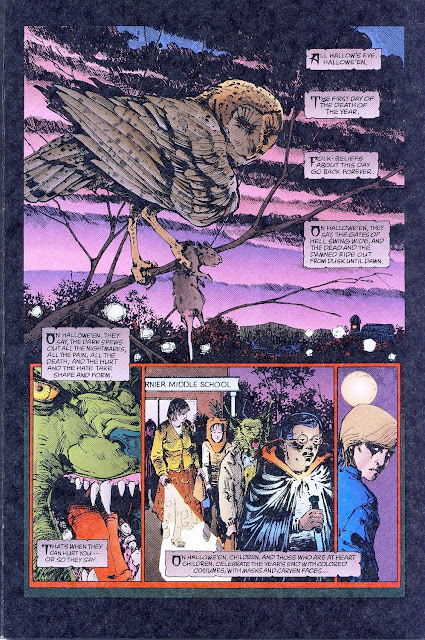2 / 5 Stars
‘The Year’s Best Fantasy Stories: 8’ (DAW book No. 501, 1982, 191 pp.), edited by Arthur W. Saha, contains stories published during 1981. The cover illustration is ‘Talena’ (of Tarnsman of Gor fame), by Oliviero Berni.
(Arthur W. Saha, 1929 - 1999, edited the 'Year's Best Fantasy Stories' series for volumes 7 through 14. He also was the father of Heidi Saha, who is famous for having appearing costumed as 'Vampirella' at sci-fi conventions in 1973 and giving the male attendees heart palpitations.)
(Arthur W. Saha, 1929 - 1999, edited the 'Year's Best Fantasy Stories' series for volumes 7 through 14. He also was the father of Heidi Saha, who is famous for having appearing costumed as 'Vampirella' at sci-fi conventions in 1973 and giving the male attendees heart palpitations.)
Editor Saha ranged farther afield in the literature for selections than did the series’ previous editor, Lin Carter. This may have reflected a dearth of worthy material (at least in Saha’s opinion) in the dedicated fantasy magazines of the time. Or, Saha may simply have decided to include stories that pushed the boundaries of the genre. But in my opinion the overall results, at least for this volume, are underwhelming. There are too many tepid tales from 'name' authors.
Brief summaries of the stories are as follows:
‘When the Clock Strikes’ by Tanith Lee: the Cinderella fairy tale re-told, with a darker atmosphere. Whatever appeal this approach to fantasy writing possessed was wilting by the time Lee published the collection ‘Red As Blood’, an anthology of these recycled fairy tales, in 1983.
‘Midas Night’ by Sam Wilson: a young artist and a strange old man together in a diner on a cold January night…and three menacing figures in the shadows across the street…an urban fantasy tale.
‘Unicorn Variation’ by Roger Zelazny: a former chess prodigy encounters a unicorn and winds up playing for very high stakes. One of the better stories in the anthology.
‘The Only Death in the City’ by C. J. Cherryh: the author tries too hard to create an existential atmosphere in this over-written, turgid story of doomed lovers. An unsuccessful effort to produce something akin to the ‘Viriconium’ tales by M. John Harrison.
‘The Quickening’ by Michael Bishop: more of a horror or SF tale than fantasy. After a strange event instantly teleports all the world’s population to random destinations, a man struggles to retain his sanity and sense of self.
‘Skirmish on Bastable Street’ by Bob Leman: another urban fantasy tale, this time about a demon confronting some bar patrons. Not particularly memorable.
‘A Pattern of Silver Strings’ by Charles de Lint: a precious tale of a harpist, his wife, and a music contest with a Bad Tinker. Very insipid and very cloying (people are 'enspelled', they engage in 'roadfaring' and 'worldwalking', 'yearning oaks keep watch', etc., etc.). But I finished it, as might I finish a sickly-sweet, 4,000 calorie sundae purchased from Cold Stone Creamery despite knowing that my gastrointestinal tract will eventually rebel…..
‘A Friend in Need’ by Lisa Tuttle: yet another urban fantasy tale. A chance encounter with a woman at an airport leads the narrator to some conclusions about strange childhood events. Reasonably well-written, but the fantasy element is quite subdued and one wonders why editor Saha thought it qualified for inclusion.
‘Pooka’s Bridge’ by Gillian FitzGerald: a Celtic myth serves as the inspiration for a tale set in medieval Ireland. One of the better entries in the collection.
‘The Belonging Kind’ by John Shirley and William Gibson: in 1981 the literary tsunami we now know as Cyberpunk was still in gestation, and to-become-giants Shirley and Gibson were some promising young writers looking to create something different and original from the withered remains of the New Wave movement.
‘Belonging Kind’ is more of a understated horror story than urban fantasy; it deals with alienation in the city and its nightclub and bar patrons. A New Wave author may have drenched the tale in highly stylized writing, probably using long passages of overly artsy prose intended to convey the sense of existential angst experienced by the lead character. But Shirley and Gibson utilize a more spare, unadorned writing style which makes the story’s creepy goings-on all the more effective. This is one of the better tales in the anthology.
All in all, ‘The Year’s Best Fantasy Stories: 8’ doesn’t come across as one of the more rewarding entries in the series. Readers must be willing to overlook most of the tales in the collection in favor of a small number of ‘keepers’.




































































